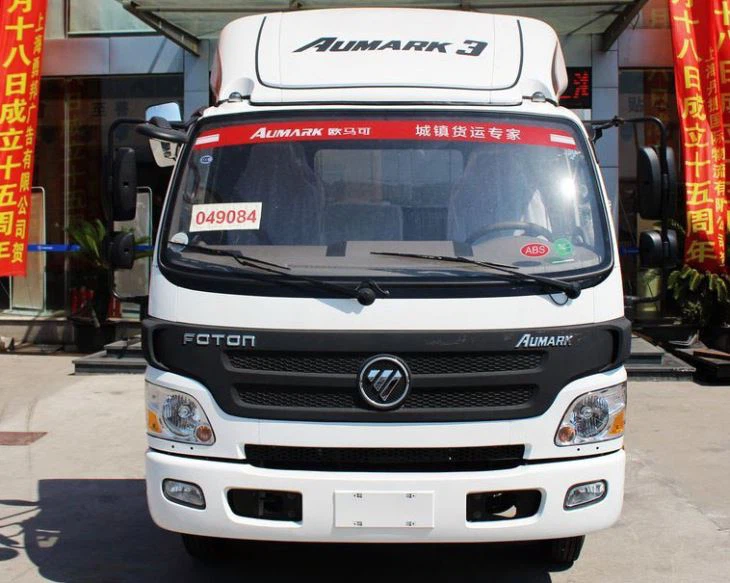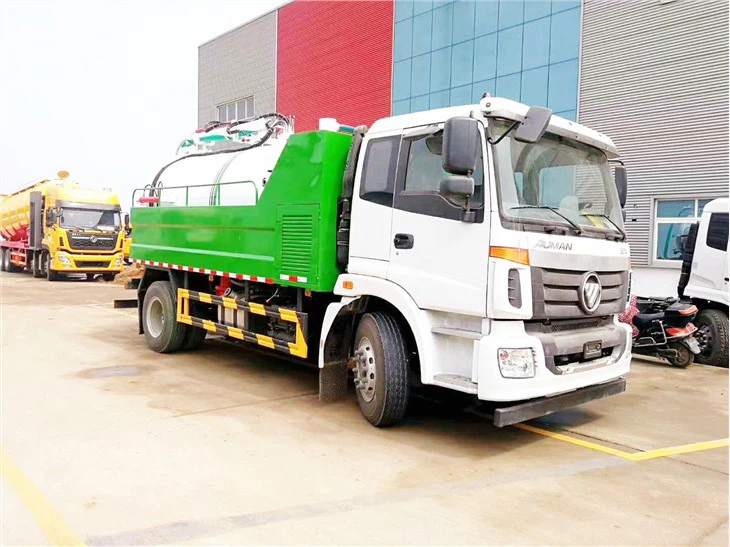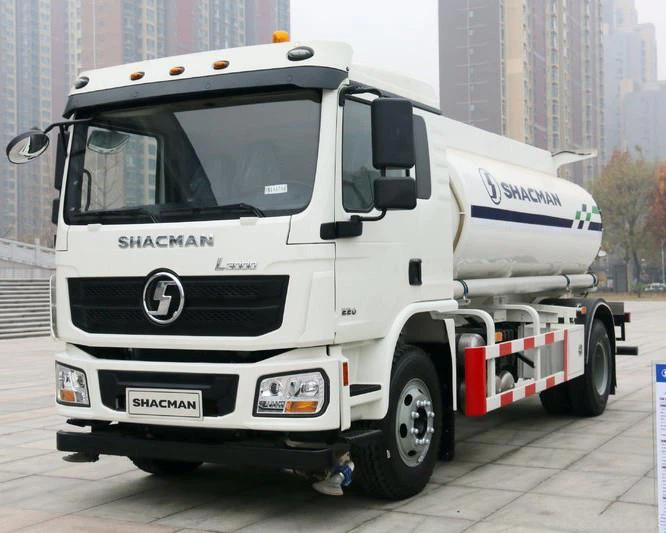Understanding Aluminium Fuel Tankers: An In-Depth Guide

Introduction
The transportation of fuel is a critical aspect of many industries, from aviation to shipping, and the efficiency and safety of this process rely heavily on the type of tanker used. Aluminium fuel tankers are becoming increasingly popular due to their lightweight, durability, and corrosion resistance. In this article, we will explore the various aspects of aluminium fuel tankers, including their construction, benefits, maintenance, and more.
What is an Aluminium Fuel Tanker?
An aluminium fuel tanker is a transport vehicle designed specifically to carry fuel. Unlike traditional steel tankers, aluminium tankers are manufactured using aluminium alloy, which offers several advantages in terms of weight, fatigue resistance, and corrosion prevention. These tankers are employed in various sectors, including road transportation, aviation, and maritime shipping.
Key Features of Aluminium Fuel Tankers
- Lightweight Construction: Aluminium is significantly lighter than steel, which allows for higher payload capacities and improved fuel efficiency.
- Corrosion Resistance: Aluminium resists oxidation more effectively than steel, enhancing the lifespan of the tanker.
- Durability: Aluminium’s fatigue resistance means that these tankers can withstand the rigors of transport without degrading.
Benefits of Using Aluminium Fuel Tankers
Opting for aluminium fuel tankers comes with numerous benefits that can enhance operational efficiency and safety. Below are the most significant advantages.
1. Enhanced Fuel Economy
Due to their lighter weight, aluminium tankers can carry more fuel while consuming less energy for transport. This contributes to lower operational costs in the long run.
2. Longer Lifespan
The corrosion resistance of aluminium allows these tankers to have a longer functional life, resulting in less frequent replacements and repairs.
3. Environmentally Friendly
Using aluminium can contribute to lower emissions as lighter tankers reduce fuel consumption. This aligns well with global efforts to reduce carbon footprints in transportation.
4. Safety Features
Aluminium fuel tankers can be designed with advanced safety features such as spill containment systems and pressure relief valves, minimizing environmental hazards in case of leaks.
Construction and Design of Aluminium Fuel Tankers
The construction of aluminium fuel tankers plays a crucial role in their functionality and safety. Understanding the design components can help in appreciating their efficiency.
Material Selection
Aluminium alloys, particularly those known for their high strength-to-weight ratios and corrosion resistance, are used to manufacture these tankers. Common choices include 5083 and 5754 alloys.
Tank Shape and Size
Fuel tankers come in various shapes, with cylindrical shapes being the most prevalent. The design often depends on the type of fuel transported and regulations governing tankers.
Standard Sizes
| Volume (Liters) | Length (m) | Diameter (m) |
|---|---|---|
| 3,000 | 7.5 | 2.4 |
| 5,000 | 9.2 | 2.6 |
| 10,000 | 12.5 | 3.0 |
Maintenance Practices for Aluminium Fuel Tankers
Regular maintenance is crucial for ensuring the longevity and efficiency of aluminium fuel tankers. Here are some essential maintenance practices.
Cleansing and Inspection
- Regularly clean the tanker to prevent fuel residue buildup, which can lead to corrosion.
- Inspect pressure relief valves and other safety features often to ensure they are fully operational.

Structural Integrity Checks
Check for any cracks or dents that may have occurred during transit. Ensure that any small damages are addressed quickly to avoid bigger issues.

Regulatory Considerations
Operating aluminium fuel tankers involves compliance with various regulatory standards that ensure safety and environmental protection.
International Regulations
There are comprehensive international regulations, such as those from the International Maritime Organization (IMO) and American Petroleum Institute (API), that set standards for fuel transportation.
Local Regulations
Local governments may also have specific requirements regarding the construction, inspection, and use of fuel tankers. It’s crucial for operators to stay informed about these regulations to avoid penalties.
Comparing Aluminium Fuel Tankers with Steel Tankers
When considering materials for fuel tankers, aluminium and steel are the most commonly debated options. Below we compare both.
| Feature | Aluminium | Steel |
|---|---|---|
| Weight | Lightweight | Heavier |
| Corrosion Resistance | High | Moderate (requires treatment) |
| Cost | Higher initial cost | Lower initial cost |
| Durability | Long-lasting | Prone to rust |
Real-world Applications of Aluminium Fuel Tankers
Aluminium fuel tankers are versatile vehicles employed across a range of sectors. Here are some practical examples.
1. Aviation Fuel Transport
Many airports utilize aluminium fuel tankers to transport jet fuel, taking advantage of their lightweight properties to maintain efficient operations.
2. Road Transportation
Logistics companies often prefer aluminium tankers for transporting gasoline and diesel, ensuring lower operation costs and enhanced safety.
3. Maritime Applications
In marine industries, aluminium tankers are utilized to transport fuel to ships, offering significant weight reductions and durability.
Future Trends in Aluminium Fuel Tanker Manufacturing
As technology continues to evolve, it brings certain trends that could significantly impact the aluminium fuel tanker industry.
Technological Advancements
New manufacturing technologies, such as 3D printing and advanced welding techniques, are making it easier and more cost-effective to produce aluminium tankers.
Smart Tanker Systems
Integrating technology like GPS tracking and telemetry into aluminium tankers is likely to improve logistics efficiency and fuel management.
FAQs about Aluminium Fuel Tankers
1. How do aluminium fuel tankers compare to plastic tankers?
Aluminium tankers are generally more durable and resistant to environmental factors than plastic tankers, which may become brittle over time.
2. Are there weight restrictions for aluminium fuel tankers?

Yes, there are weight restrictions that vary by region and logistics regulations. Operators must ensure compliance to avoid penalties.
3. Can aluminium fuel tankers be repaired if damaged?
Yes, aluminium tankers can be repaired, but it is crucial to hire professionals who specialize in aluminium welding and repairs to maintain structural integrity.
4. What types of fuel can be transported in aluminium tankers?
Aluminium tankers can transport various types of liquid fuels, including gasoline, diesel, and aviation fuel, among others.
5. What is the average lifespan of an aluminium fuel tanker?
The average lifespan of an aluminium fuel tanker can range from 15 to 25 years, depending on maintenance practices and usage conditions.
6. How is the safety of aluminium fuel tankers ensured?
Safety is ensured through rigorous design standards, regular inspections, and adherence to local and international regulations regarding fuel transport.
